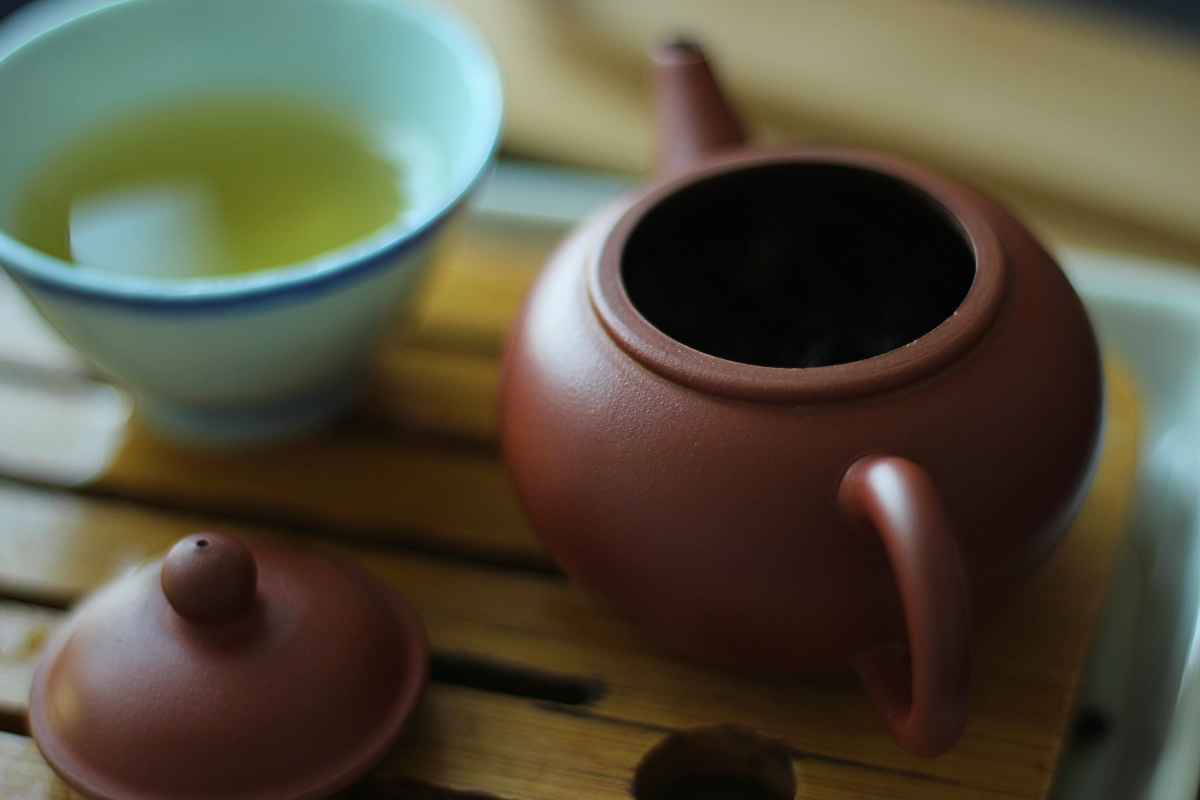Teasenz was very kind to send me some samples to review. I received six samples in total and today was the first day I tried one. It was a very warm day In Belgium (probably the last day of Summer), which is why I had a fresh and invigorating green tea: Liu An Gua Pian (or Lu’An Gua Pian). In the West, this tea is also referred to as Melon Seed green. You can read more about the other teas I got by clicking the links:
- Lapsang Souchong Tea Tasting (Teasenz)
- Fujian Silver Needle (Teasenz)
- Anji Bai Cha Tea Tasting (Teasenz)
- Yunnan Gold Tea Tasting (Teasenz)
- Wild Orange 2009 Ripe Puer Tangerine Tea Tasting (Teasenz)
Don’t know where to buy tea online in Europe? I made a list with over 80 online shops and I keep updating it regularly. You can check it over here.
Liu An Gua Pian
Liu An Gua Pian is a green tea from Liu An in Anhui Province, China. The name can be split into two parts: “Liu An”, which refers to the origins of this tea and “Gua Pian”, which means melon seed. The latter has to do with the shape of the leaves. During production, the leaves are pan-fried over low heat. This makes the leaves curl into the shape of melon seeds. During the session, I did not use my trustworthy Tokoname Kyusu but used my porcelain gaiwan instead. I don’t know why but for some unexplainable reason, I felt I had to use my gaiwan again. I also changed the length of the infusions because I followed the brewing instructions from Teasenz.
The dry leaves are very long and curled. Some of them are straight but there are also some curved ones in there. They have a dark green colour and the aroma is rather subtle. There is something sweet in there but I can’t really name it. There are also some verdant notes present.
The wet leaves show their true size. They are very large but what caught my eye was the smoothness of the leaves. I did not expect them to be this smooth. The colour is a beautiful kind of green; it’s on the lighter side. The aroma is grassy and verdant with a woody undertone.
Tea tasting
- Water 80°C
- 3.5g for a 90ml porcelain Gaiwan
- 1 rinse
- 6 infusions
Have you considered subscribing to Tea Adventures? You can enter your email address in the sidebar and get updates whenever I publish a new article. You never have to miss an article again by joining our mailing list.
Infusions
Infusion 1 (20 sec): very light yellow/green colour. Light but pleasant verdant notes at the start. Some nutty flavours in the finish and aftertaste. There are also some verdant notes in the aftertaste and a butteriness is noticeable throughout the infusion.
Infusion 2 (20 sec): the colour is more yellow and the flavour is more verdant, which makes it quite intense. There is a subtle nuttiness in the middle and the aftertaste is verdant.
Infusion 3 (20 sec): again, the verdant and grassy notes are quite intense at the start, but not too intense. I also got a sweetness in the middle in combination with a subtle nuttiness.
Infusion 4 (30 sec): the colour doesn’t change that much anymore. Verdant flavours at the start but they are not that intense now. It quickly changes into nuttiness and a light sweetness in the finish. The aftertaste is mainly vegetal and astringent.
Infusion 5 (40 sec): this one is less green than the previous infusion, which is more to my liking. There is sweetness and nuttiness in the middle and the aftertaste is sweet as well. Still some light astringency.
Infusion 6 (50 sec): verdant flavours changed into a sweetness at the start. It’s still a bit green but it’s a lot sweeter now. I’m also getting nutty flavours in the middle.
Do you want to know more about a Dan Cong oolong tea I tasted recently? Click here to read my full notes about the Wu Dong Mi Lan Xiang.
Conclusion
If you like intense and grassy/verdant green teas, you will definitely like this one. This Liu An Gua Pian, Lu An Gua Pian or Melon Seed green was a bit too green for me in the beginning. It is, however, perfectly possible that my earlier infusions were too long. From the middle to the end, the combination of nuttiness and sweetness was very enjoyable and complex. I liked the two final infusions the most because those were not as intense. For me personally, it would be perfect if it was a bit less green and nuttier instead. This, however, would make it a completely different tea… In general, the start of the infusions was mainly verdant, while the middle and finish were sweeter and nuttier.
If you want to experience this explosion of verdant and green flavours, you can buy the tea here.




